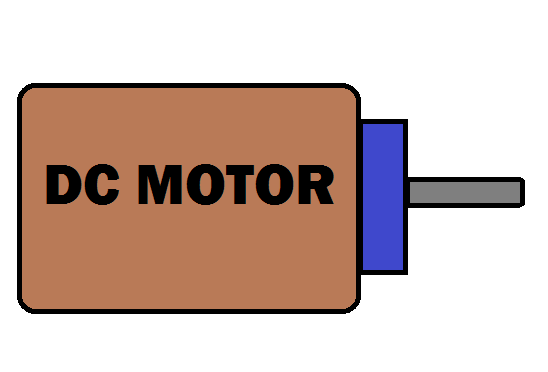[maxbutton id=”1″ url=”http://www.howengineeringworks.com/top-ten-electrical-switchgear-and-protection-questions/”]
What is DC motor?
Here is a great topic to discuss today DC Motors are widely used electrical motor. As its name suggests that DC motors are electrical Motors which work on DC supply.
I hope you would know what is electric motor?
Simple words, an electric device which is used to convert electrical energy into mechanical energy is know as electric motor.
Similarly,
DC motor can be defined as an electrical device which convert the DC electrical energy into mechanical energy. It means DC supply is given input to the DC motor and we get rotatory mechanical energy.
It is very important to know that how does DC motor work. If you want to know then take a look on working principle of DC motor.
Principle of DC motor
Working principle of DC motor is very simple. It works on the principle of Lorentz Force i.e. when a current carrying conductor is placed in a magnetic field it will experience mechanical force.
Let’s make it more simple, suppose current is passed through a conductor and if this conductor is placed in a magnetic field the conductor will experience force and start moving. The direction of force can be determined by a Fleming left hand rule.
Suppose ‘L’ is length of conductor, ‘I’ current flowing through conductor, and ‘B’ is magnetic flux density, then magnitude of force is given as
F = B×I×L
Construction of DC motor is almost similar to the DC generator. But we will not discuss it here, we learn about it in the another post.
Working of DC motor
This section will help in understanding that how does DC motor uses input DC electrical energy and start rotating.
There are mainly two winding in DC motor i.e. one is field winding on stator side and another is armature winding which is on rotor side.
We are considering here only one rotor conductor and small section of field winding (stator). When DC supply is given to field winding its produce a magnetic field or devolved N and S poles.
When DC supply is given to armature winding current will flow through armature conductor which is placed in the magnetic field of main field winding.
If reminds the principle of the motor, it says that when a current carrying conductor is placed in a magnetic field it will experience a force and start moving. As the current caring rotor conductor is in the influence of stator magnetic field therefore rotor conductor will experience a mechanical force and start rotating. But here is a complication that motor will rotate in clockwise or anticlockwise?
The solution is “Fleming left hand rule”.
Yes, Fleming left hand rule is used to determine the directions of force or rotation.
What is Fleming left hand rule?
It state that when thumb, fourth finger and middle finger of the left hand are stretched in such a way that all are mutually perpendicular to each other and if the fourth finger represent the direction of magnetic field, middle finger indicates the direction of current then thumb represents the direction of force.
Here is very interesting question that why does current carrying conductor experience force. If you want to know then please read on
How does rotor move?
Explanation is divided into two part in order to make it more easy to understand.
Part 1:
Suppose field winding is disconnected from DC supply, there will no main field flux. Secondly, As we know that every current carrying conductor has rotating magnetic field around it. According to Right hand thumb rule, magnetic field around conductor is clockwise because cross signs representing entering of current.
In short there is a mf around current carrying conductor.
Part 2:
When DC supply is given to armature field it will produce main field flux.
Here is interesting point to note that, upper side flux of conductor is aiding to main field flux and downsides flux of conductor is opposing main field flux. Therefore, main field flux follow upper side path i.e. easiest path. This create a rubber band and push conductor downward. This results a force on conductor and hence it start moving.
This is how DC motor rotate.
Types of DC motors
DC Motors are mainly of three types
1. DC shunt Motors
2. DC series Motors
3. DC compound Motors
A DC shunt motor is an electric motor powered by direct current where the field windings are connected in parallel to the armature windings.
A DC Series motor is an electric motor powered by direct current where the field windings are connected in series to the armature windings.
Third one is DC compound motor. This motor is a combination of the series motor and the shunt motor. It has a series field winding that is connected in series with the armature and a shunt field that is in parallel with the armature.
